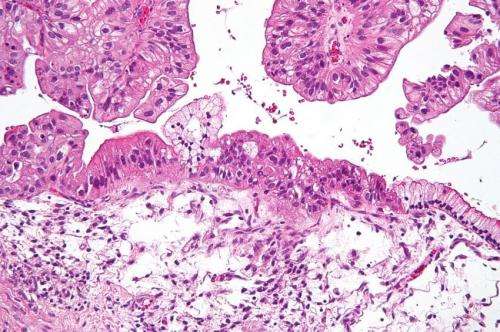Scientists solve breast and ovarian cancer genetic mystery

Francis Crick Institute scientists, funded by Cancer Research UK, have solved a decades-old mystery and helped to unravel the genetic cause of some breast and ovarian cancers, according to new research published in the journal Cell.
Following a five-year study in nematode worms, researchers have uncovered how key proteins can switch on a protein called RAD51, allowing it to repair cancer-causing DNA damage in cells.
Women with faulty RAD51 and BRCA1 and BRCA2 genes are at higher risk of developing breast and ovarian cancer. Scientists already knew how proteins produced by these genes work hand-in-hand to fix DNA damage, and why faults can lead to disease.
Defects in protein cousins of RAD51 also increase the risk of these cancers. But scientists didn't know how.
The team has now revealed how these protein cousins work to switch on RAD51 by changing its shape - which dramatically boosts its DNA-repair powers.
Dr Simon Boulton, lead author and group leader at the Francis Crick Institute, said: "These protein cousins - known as paralogs - have been an enigma for about 30 years. But now we know they are right at the heart of repairing cell damage and helping to stop breast and ovarian cancers developing. In fact they have as vital a role as the more well-known BRCA genes in preventing the disease.
"Knowing how these proteins work won't make an immediate difference to cancer patients, but it's another piece of the cancer jigsaw puzzle which could lead to more effective and kinder treatments in the future."
Breast cancer is the UK's most common cancer, with around 50,000 women diagnosed each year. Ovarian cancer is the fifth most common cancer in UK women, with more than 7,000 cases diagnosed annually. More than one in 20 ovarian cancers and breast cancers are due to an inherited genetic fault. Experimental drugs called PARP inhibitors target cancers in people with inherited mistakes in the BRCA1 or BRCA2 genes. In the future, cancer patients who have inherited faulty protein cousins could potentially benefit from these types of drugs.
Nell Barrie, senior science communications manager at Cancer Research UK, said: "Understanding the nuts and bolts of cancer is vital if we are to beat this disease. This landmark discovery reveals another potential chink in cancer's armour - and it could help lead to more personalised treatments that take patients' genetic make-up into account and ultimately save more lives."
More information: 'Rad51 paralogs remodel pre-synaptic Rad51 filaments to stimulate homologous recombination' Taylor, M.R.G., Špírek, M., Chaurasiya, K.R., Ward, J.D., Carzaniga, R., Yu, X., Egelman, E.H., Collinson, L.M., Rueda, D., Krejčí, L. and Boulton, S.J. (2015). DOI: 10.1016/j.cell.2015.06.015


















